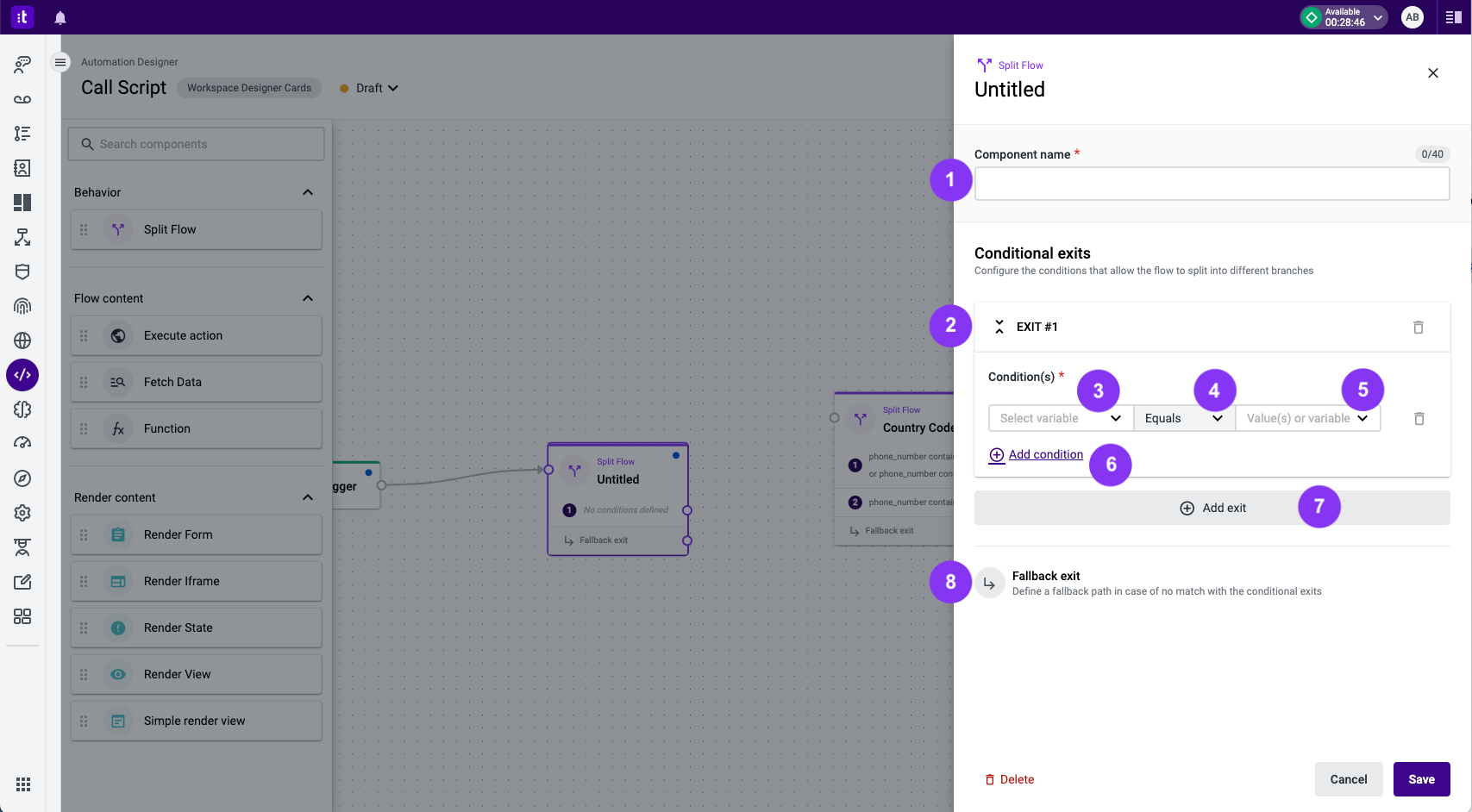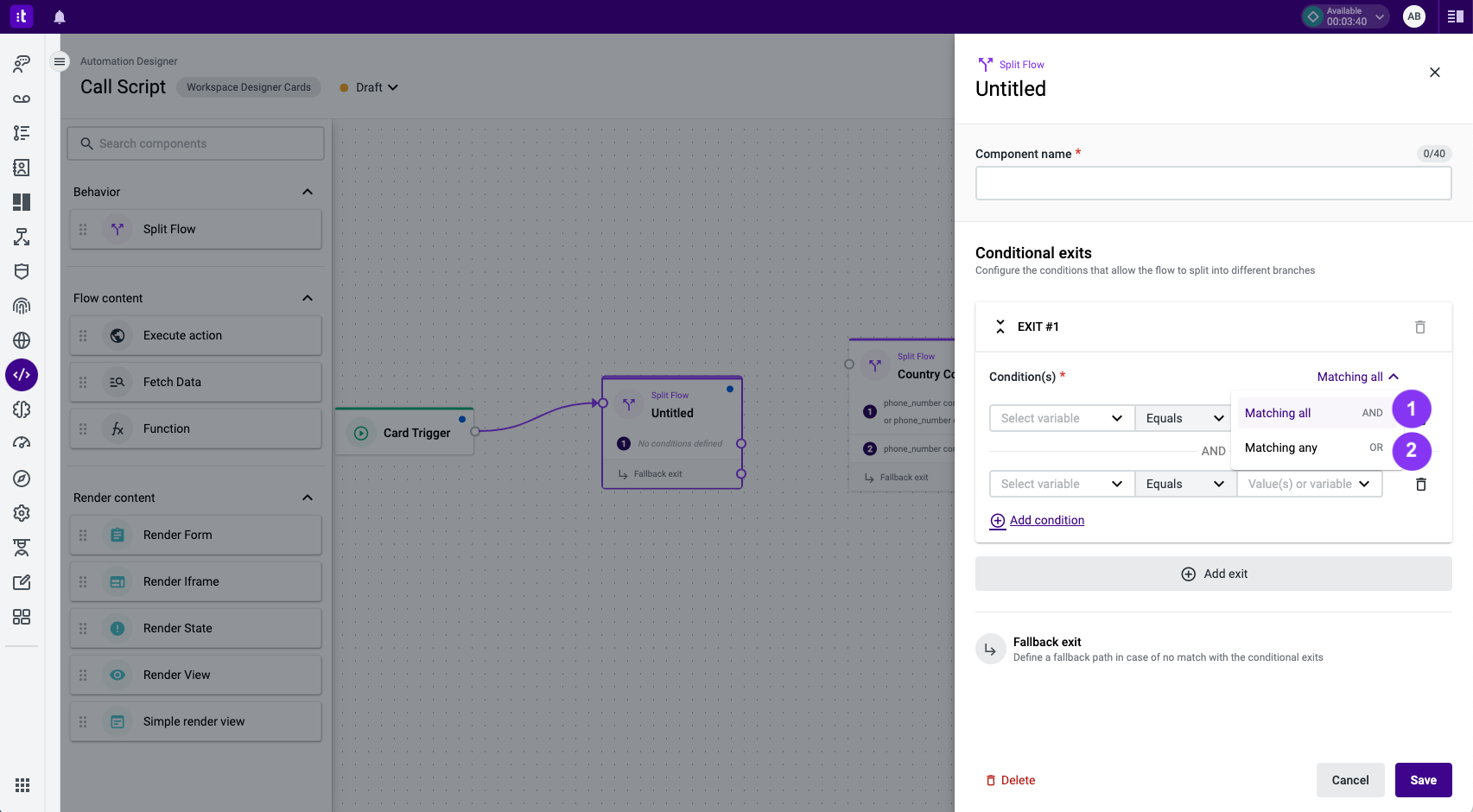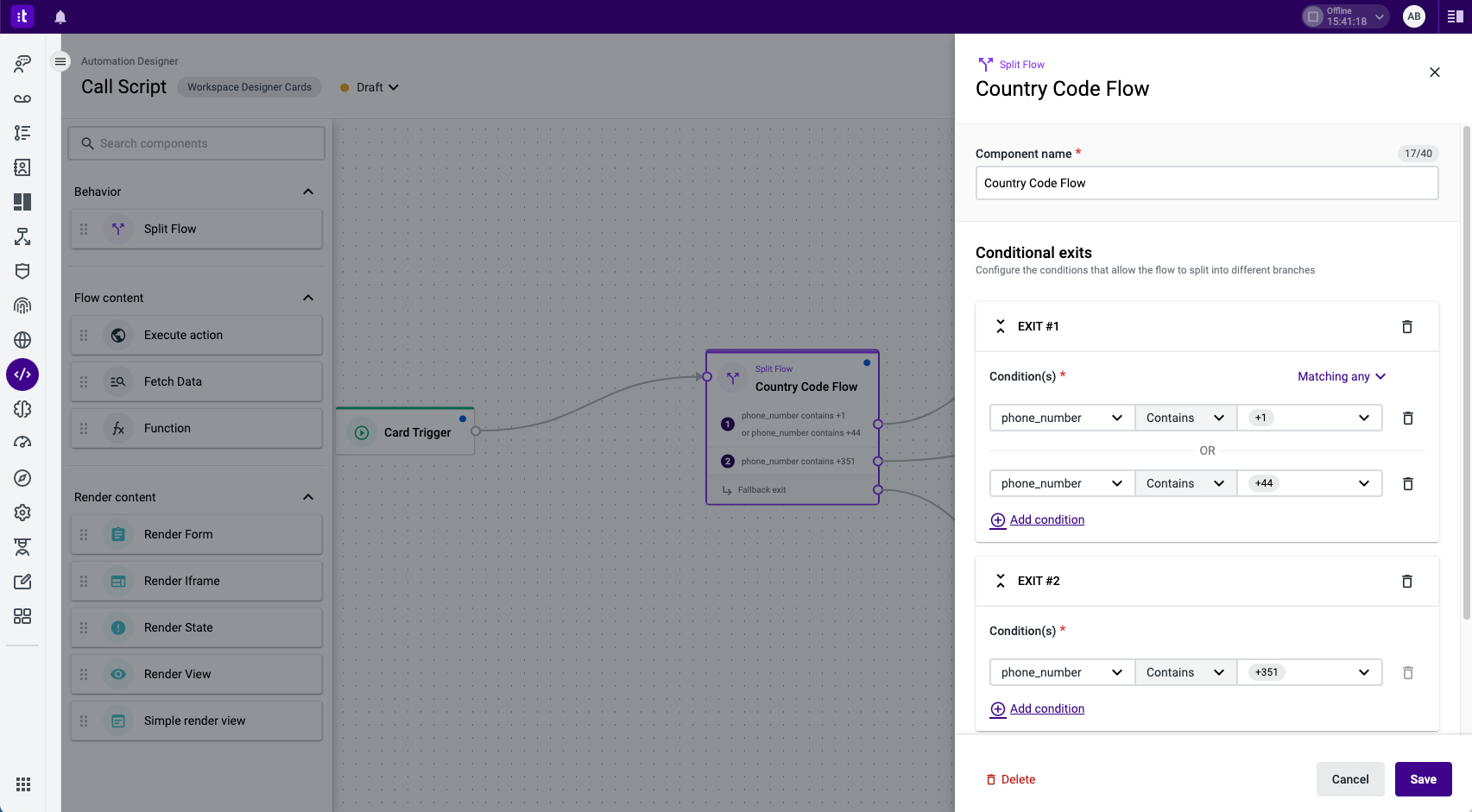Split Flow
The Split Flow component allows you to present different outcomes to the user based on specific conditions.
Similar to components, it is mandatory to provide a Component name (Figure 1 - 1).
To use the Split Flow, you must define at least one exit (Figure 1 - 2). Each condition consists of a variable (Figure 1 - 3), a comparator (Figure 1 - 4), and a value or variable for comparison (Figure 1 - 5). The available comparators are as follows:
- Equals.
- Different than.
- Contains.
- Does not contain.
- Greater than.
- Greater than or equals.
- Less than.
- Less than or equals

Figure 1 - Split Flow settings
Additional conditions can be added to each exit (Figure 1 - 6), and more exits can be added to the Split Flow component (Figure 1 - 7). A fallback exit (Figure 1 - 8) is automatically provided to be used when none of the defined conditions are met.
When there are multiple conditions per exit, you can choose whether all of them (Figure 2 - 1) or just one of them (Figure 2 - 2) need to be met for the automation to follow that particular exit.

Figure 2 - Conditions settings in the Split Flow component
Figure 3 presents an example of a Split Flow configuration. See here a real use case example.

Figure 3 - Split Flow configuration example
Troubleshooting
If you have questions or technical issues, please open a ticket using this form.
Updated about 2 years ago